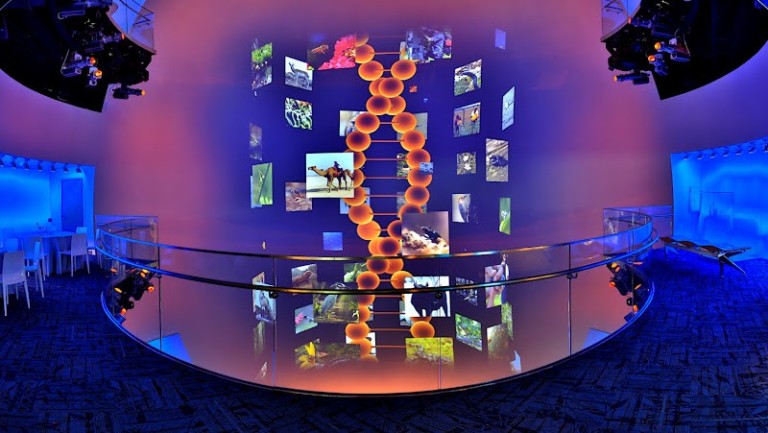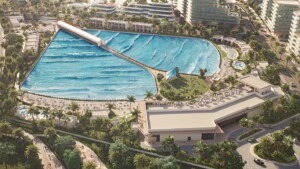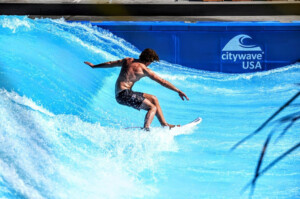Electrosonic, an international audio-visual company that creates tailored, state-of-the-art solutions for a wide range of markets including theme parks, museums, video conferencing and control rooms, has provided the audiovisual systems for the new Nature Research Center at the North Carolina Museum of Natural Sciences.
Related: Electrosonic Profile/ Electrosonic’s Interactive Audiovisual Exhibits at Brooklyn Botanic Garden Visitors Center/ Audiovisual technology: A short history of the videowall
Yiannis Cabolis, Electrosonic Design Consultant said, “We represented the client’s interests making sure that the approach, the systems’ look and feel, and the integration all came together as planned. Over the course of five years on the job, there were many changes in the AV world, and the systems themselves evolved. We interfaced with manufacturers and strategic partners to get a good picture of what we could expect to see by installation time.”
The new 80, 000-square-foot Nature Research Center aims to offer visitors a fun science experience that shows the importance of science in our everyday lives with state-of-the-art labs, research opportunities, interactive exhibits and live presentations.
 One of the most challenging aspects of the project was the SECU Daily Planet, an immersive multimedia theatre with a 40×40-foot high-definition screen. Electrosonic supplied six Christie WU12K-M series 3-chip DLP digital projectors for maximum brightness and resolution on the Daily Planet’s 40×40-foot HD screen. Four of the projectors provide the blend for the bottom and middle of the screen and two for the upper portion. Four Barco DL3 moving digital light engines paint images on the bands of the screens located between the three floors.
One of the most challenging aspects of the project was the SECU Daily Planet, an immersive multimedia theatre with a 40×40-foot high-definition screen. Electrosonic supplied six Christie WU12K-M series 3-chip DLP digital projectors for maximum brightness and resolution on the Daily Planet’s 40×40-foot HD screen. Four of the projectors provide the blend for the bottom and middle of the screen and two for the upper portion. Four Barco DL3 moving digital light engines paint images on the bands of the screens located between the three floors.
Four Delta high-resolution uncompressed media servers from 7thSense Design, which were specifically configured for the project, feed the projectors, TV/radio outputs and preview/confidence monitors. The media servers also handle all warping, blending and color balancing. A multi-channel Medialon CobraNet-enabled server, which uses CobraNet-enabled speakers for DSP and delivery, handles audio.
Electrosonic also supplied streaming computers to the equipment room and the operator’s control kiosk in the Daily Planet. These computers and a laptop input from the speaker’s podium are routed through live inputs of the Delta servers to the Daily Planet’s main screen in a pre-determined Presentation mode window. The window features one to three occurrences of the same information tiled with a common background to the big screen.
In addition, Electrosonic provided audiovisual solutions for 55 innovative experiential media exhibits in the NRC wing, including “magic tables” for specimen identification via RF tags; visitor-veterinary lab observations; a salt-water tank with touch-activated information; and a weather prediction station with live international links.
Among the principal equipment supplied by Electrosonic for these exhibits were projectiondesign and High End Systems projectors; I-Tech touchscreens; Medialon Manager show control; Innovox, Renkus-Heinz and JBL speakers; QSC and Stewart Audio amps; and Peavey audio processing.
David Weiner Design was the lighting designer for the NRC. At Electrosonic, Gary Barnes was the project manager, Carl Hartzler the project engineer, Yiannis Cabolis the design consultant and Les Hill the sales person. Small Design Firm designed the interactives; Batwin & Robin Productions was the content producer.













